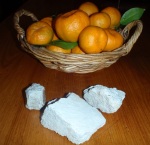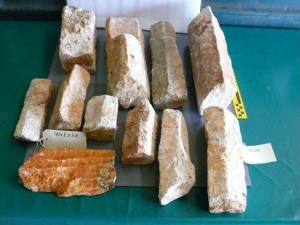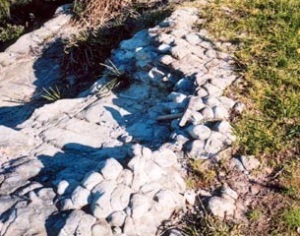 The first geological observation recorded in the new colony was the sighting of columnar sandstone. This discovery was made some time between 26 January and 26 February 1788 and was recorded by John Hunter as ‘(in miniature) resembling the Giants Causeway in the north of Ireland’.
The first geological observation recorded in the new colony was the sighting of columnar sandstone. This discovery was made some time between 26 January and 26 February 1788 and was recorded by John Hunter as ‘(in miniature) resembling the Giants Causeway in the north of Ireland’.
Journal Paper published December 2011.
At the Laperouse Wreck Site at Vanikoro, sandstone was located which was thought to have originated from Botany Bay. It has been displayed in the Le Musée maritime de Nouvelle-Calédonie. Recently, Greg Bond (Treasurer of the Friends) took a sample of the local sandstone (provided by Charles Abela, Vice President) and it was confirmed by Michel ALLENBACH, Professeur de Géologie that it was most probably a match - see Geological Report on the Sandstone from La Perouse.
 The prime reason that the expedition took the sandstone pieces was as geological samples which at the time they thought a curiosity in that they were geometric vertical columns quite unlike ordinary sandstone which has horizontal sedimentary features. The French did not know it at the time but the geometry is caused by very hot surrounds as described in the report. In this case there is a volcanic dyke metres away or at least there was 380 million years ago. The lava from that dyke turned into world class porcelain clay some of which was taken by returning first fleet ships and given to the Wedgewood factory in England from which they made cameo plates with the face of La Perouse. (photo left of white clay from La Perouse)
The prime reason that the expedition took the sandstone pieces was as geological samples which at the time they thought a curiosity in that they were geometric vertical columns quite unlike ordinary sandstone which has horizontal sedimentary features. The French did not know it at the time but the geometry is caused by very hot surrounds as described in the report. In this case there is a volcanic dyke metres away or at least there was 380 million years ago. The lava from that dyke turned into world class porcelain clay some of which was taken by returning first fleet ships and given to the Wedgewood factory in England from which they made cameo plates with the face of La Perouse. (photo left of white clay from La Perouse)
(Photos: top Columnar sandstone specimens from the wreck of the Boussole at Vanikoro Musée de l’histoire maritime de la Nouvelle-Calédonie, Noumea; below - Columnar sandstone at La Perouse north of the Bus Terminus.)



You must be logged in to post a comment.